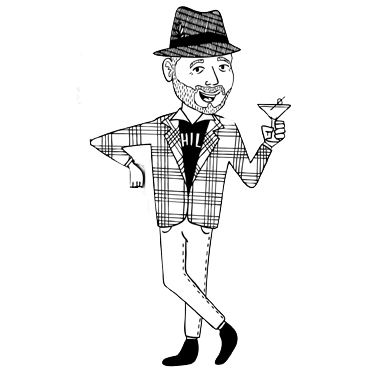Here’s one from Civil Engineer John Watkins in 1900.
“Man will see around the world. Persons and things of all kinds will be brought within focus of cameras connected electrically with screens at opposite ends of circuits, thousands of miles at a span.”
This next one is really cool. Facetime, anyone? A report in the Indianapolis Star April 9, 1927:
“Spectacles may be staged in distant cities and be transmitted for the entertainment of individuals hundreds of miles away. Conversations may be held across the sea and the parties see each other as clearly as though they were gathered in the same room. Distance will be annihilated for sound and sight and the world made immeasurably smaller for the purposes of communication.”
Radio pioneer Lee DeForest was a bit off. He said in 1926:
“While theoretically and technically television may be feasible, commercially and financially I consider it to be an impossibility…a development of which we need waste little time dreaming.”
We’ve been dreaming about smellyvision since the 20s. Why isn’t this a reality yet? A report in the “Radio Mirror” of the Daily News reported Dec. 30, 1926:
“There may come a time when we shall have ‘smellyvision’ and ‘tastyvision’. When we are able to broadcast so that all the senses are catered for, we shall live in a world which no one has yet dreamt about.”
At a special event unveiling the new AT&T experimental television April 7, 1927, Secretary of Commerce Herbert Hoover said:
“Human genius has now destroyed the impediment of distance in a new respect, and in a manner hitherto unknown.”
British television pioneer John Logie Baird – whose experiments were with mechanical television – said during a visit to the U.S. in September 1931:
“There is no hope for television by means of cathode ray tubes.”(And in 1940, Baird said: “Cathode ray tubes are the most important items in a television receiver.”)
A 1939 New York Times review of a demonstration of television at the 1939 World’s Fair:
“The problem with television is that people must sit and keep their eyes glued on a screen; the average American family hasn’t time for it.”
George Boar, a farmhand from Suffolk, was quoted in the Feb. 1939 issue of Radio Times in an interview just after he had “invested his whole fortune” to buy a television receiver:
“Television’s far more entertaining and much less trouble than a wife would be.”
Film mogul Darryl F. Zanuck of 20th Century Fox said in 1946:
“Television won’t be able to hold on to any market it captures after the first six months. People will soon get tired of staring at a plywood box every night.”
Roger Ebert pretty much predicted the future in 1987. Keep in mind, none of what he spoke of existed then.
“We will have high-definition, wide-screen television sets and a push-button dialing system to order the movie you want at the time you want it. You’ll not go to a video store but instead order a movie on demand and then pay for it. …With this revolution in delivery and distribution, anyone, in any size town or hamlet, will see the movies he or she wants to see.”
Hat tip: I got several of these from here.


